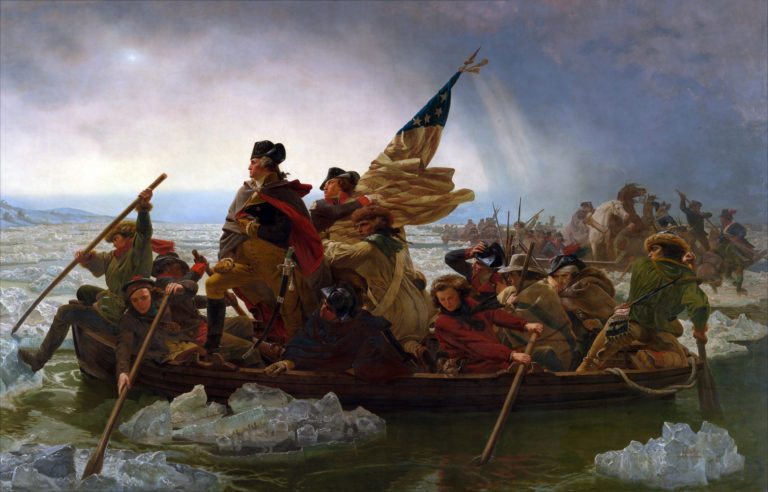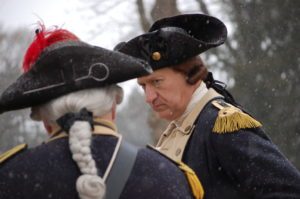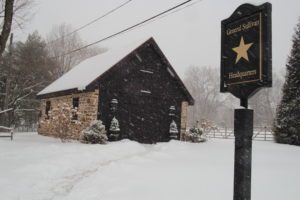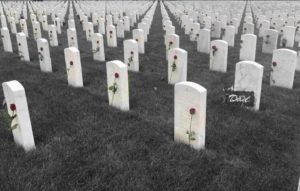History of Upper Makefield
Upper Makefield Township of Bucks County, Pennsylvania, was first settled in 1682. In that year, William Markham purchased the land from American Indians. “Makefield” is likely a corruption of Macclesfield or Maxfield, an English town from which several original land buyers hailed. The majority of original settlers were Quakers, though there were also Scotch-Irish Presbyterians.

On the evening of December 25, 1776, George Washington led American forces across the Delaware River, departing from Taylorsville (now called Washington Crossing) and arriving in Titusville, New Jersey. Washington’s troops were headed for what became a decisive victory: The Battle of Trenton. This turning point in the American Revolution is memorialized at Washington Crossing Historic Park, located in Upper Makefield Township.
 Throughout Upper Makefield Township, houses from the 18th and 19th centuries mix with more recent styles so that residents experience history every day, some even in their own homes. The Township’s rich legacy inspires the residents to honor the past and to preserve the pristine lands that the original settlers knew in their time.
Throughout Upper Makefield Township, houses from the 18th and 19th centuries mix with more recent styles so that residents experience history every day, some even in their own homes. The Township’s rich legacy inspires the residents to honor the past and to preserve the pristine lands that the original settlers knew in their time.
Historical Advisory Commission
The Historical Advisory Commission promotes the appreciation and protection of historic resources throughout Upper Makefield Township and advises the Board of Supervisors on the identification, documentation, and preservation of the Township’s historic sites, buildings, and documents, for the benefit of current and future residents.
Historic Bucks County
Upper Makefield Township is part of a richly historic region. View Bucks County listings on the National Register of Historic Places.
Notable Historic Locations
Notable historic aspects of Upper Makefield Township include historic homes, villages, parks, a library of the American Revolution, and one of only 3 open National Cemeteries in Pennsylvania. (The Philadelphia National Cemetery is closed to new internments. Indianttown Gap and the National Cemetery of the Allegenies remain open as well.)
Just as George Washington slept here, Upper Makefield is a modern-day bedroom community, attracting people who work in New Jersey, New York, and Pennsylvania. It grew to nearly 6,000 residents from 1,410 between 1950 and 1990. Before 1930, Upper Makefield’s population was under 1,000.
Growth has slowed dramatically since 2000, due to concerted land preservation efforts, national economic conditions, and near build-out. Population was estimated at 8,300 in 2016.
The David Library of the American Revolution
The David Library was founded in 1959 by Sol Feinstone, businessman and collector of Americana. (Yes, Upper Makefield’s elementary school is also named after Sol Feinstone.)
For a while, the David Library was housed at the Washington Crossing Historic Park’s Visitors’ Center. In 1974 Sol Feinstone opened the library building on 118 acres of his 200-acre farmstead located at 1201 River Road in Washington Crossing. In 2020, the library moved to the American Philosophical Society in Philadelphia and is now the David Center for the American Revolution. It’s open to the public five days per week. There you’ll find primary sources on the American Revolution, including documents microfilmed at the British Archive. The Center also offers films, lectures and events related to the Revolutionary War.
Here is a brief but interesting biography of Sol Feinstone from the website buckscountyintime.
The Historic Delaware River Canal
The 60-mile-long Delaware Canal was completed in 1832, to transport anthracite coal along the eastern seaboard. The canal runs about 5.7 miles through Upper Makefield, with its towpath a favorite of pedestrians and bicyclists alike. There’s parking and an entry to the canal off of River Road at Washington Crossing Park, near Bowman’s Hill. Read more at the Friends of the Delaware Canal.
Historic Villages of Upper Makefield Township
The Villages of Bucks County, a guidebook includes a history of early villages located within Upper Makefield Township and what makes them unique.
Buildings with Ties to the American Revolution
Keith House, Washington’s Headquarters aka Pineville.
This property was likely constructed circa 1761. Now sitting on just one acre, the original property was 230 acres, set aside in 1679, for family use by William Penn. William Keith acquired it at auction in 1761.
General George Washington made it his headquarters from December 14 to December 24, 1776, as he planned the troop’s December 25-26 crossing of the Delaware River to what became known as the Battle of Trenton.
Hayhurst Farm
 This farmhouse was built by Quaker minister John Hayhurst in 1742.
This farmhouse was built by Quaker minister John Hayhurst in 1742.
On the eve of Washington’s famous crossing of the Delaware during the Revolutionary War, General John Sullivan stayed at this farm from December 20-25, 1776. Sullivan was a Federalist from New Hampshire appointed by George Washington. Read more about General John Sullivan.
John Chapman House
Located on Eagle Road, a portion of the building dates to circa 1735. It is also known as the London Purchase Farm. In 1781, it comprised about 265 acres. By 1973, the property consisted of 10 acres of land, with another 74 acres planted with soy bean and corn crops.
During the American Revolution, the property served as headquarters for General Henry Knox and Captain Alexander Hamilton.
John Burroughs Homestead
Today, this 18th century fieldstone home in the Taylorsville area is historic in its own right: It was built in four sections. There’s also a fieldstone carriage house, a tool shed and a caretaker’s cottage. In 1984, these buildings sat on a 10-acre property.
Lieutenant Colonel James Hendricks of the 6th Virginia Regiment is associated with this property dating back to the Revolutionary War.
Villages within Upper Makefield Dating to the 1800s
Brownsburg Village
This National Historic District includes 37 buildings built between 1810 and 1840. They reflect Italianate and Federal styles. It also includes structures that contribute to the Delaware Canal coal transportation operations, which operated until the early 1930s.
Buckmanville Historic District
This district includes 12 buildings built between 1820 and 1875 in the Greek Revival and Federal Styles.
Dolington Village Historic District
This mostly rural residential district includes 64 contributing buildings, built mostly between 1800 and 1875.
A Tavern and a Quaker Meetinghouse
Eagle Tavern
This historic inn and tavern was constructed of stone in about 1800, and was expanded in 1854. In the 1800s, this building was used as a hotel, store, post office and polling place. It later was converted to a single-family home.
Makefield Meeting
This historic Quaker meeting house complex was built in 1752 and added to in 1764. The property includes two stuccoed-stone structures, a meetinghouse and a schoolmaster’s house (built in 1787). It also includes a horse shed built about 1800.
Our National Veteran’s Cemetery
 The U.S. Department of Veteran’s Affairs opened the Washington Crossing National Cemetery in 2009, just 3 miles southwest of where Gen. George Washington crossed the Delaware River in 1776. When it opened, the cemetery was the 4th national cemetery established in Pennsylvania and the 131st in the national cemetery system. Three of the 4 Pennsylvania cemeteries remain open for new burials. A record of notable veterans buried at the cemetery is in development. Cemetery Details.
The U.S. Department of Veteran’s Affairs opened the Washington Crossing National Cemetery in 2009, just 3 miles southwest of where Gen. George Washington crossed the Delaware River in 1776. When it opened, the cemetery was the 4th national cemetery established in Pennsylvania and the 131st in the national cemetery system. Three of the 4 Pennsylvania cemeteries remain open for new burials. A record of notable veterans buried at the cemetery is in development. Cemetery Details.